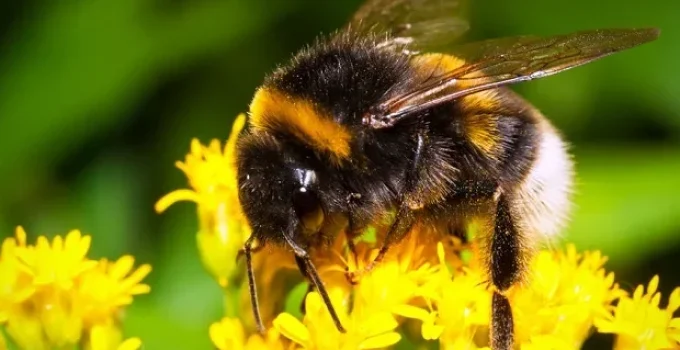Do Bumblebees Sting?
Bumblebees can and do sting. Though not as aggressive as yellow jackets, a bumblebee will sting in defense of a perceived threat.
Do All Bumble Bees Sting?
Only female bumblebees sting. As with the 20,000 other bee species worldwide, only female bees are equipped with a stinger. [1] The only job of the male bumblebee, or drone, is to fertilize the queen, after which time he will die. [2]
Why Do Bumble Bees Sting?
A solitary bee pollinating flowers generally poses no threat unless mishandled or accidentally stepped on. But that’s not the case when it comes to defending their colony. [3]
Bumblebees set up a new nest every year, with most nesting in the ground in an existing cavity such as an abandoned rodent hole or other easily accessible cavities. This is when it becomes a problem for humans working or playing in the yard. If a nest is disturbed, bumblebees will relentlessly defend it. [4]
Can Bumble Bees Sting More Than Once?
Bumble bees can sting more than once. As far as social bees go, paper wasps, yellow jackets, and bumblebees all have smooth stingers that they can use to sting several times. Since bumble bees are generally docile, it’s not a real concern unless provoked. Yellowjackets are much more aggressive and will sting unprovoked. [5]
Do Bumble Bees Die After They Sting?
Bumble bees do not die after stinging. The bee that dies after it stings is the honey bee. The honey bee dies after stinging because it is equipped with a barbed stinger that digs into the flesh of its victim. The stinger, as well as the entire lower portion of the bee’s abdomen, tears off when it pulls away from the victim ultimately killing the bee.
Do Bumble Bees Bite?
The bumble bee’s main line of defense is to sting. Stingless bees, or meliponines, cannot sting to defend themselves, so instead, they will bite. [6]
References
- [1] “How many species of native bees are in the US.” USGS
- [2] “Species Page – Bumblebee“. Pennsylvania State University.
- [3] “Bumble Bees in Ohio: Natural History and Identification of Common Species.” Ohio State University Extension.
- [4] “Bumble Bees as Pollinators.” Clemson University Cooperative Extension.
- [5] “Wasps and Bees.” The University of Minnesota Extension.
- [6] “Honey Bee – Ask a Biologist.” Arizona State University.
